#estimating software integration
Explore tagged Tumblr posts
Text
Why Every Contractor Needs a Professional Construction Estimating Service
Introduction
In the competitive construction industry, accurate cost estimation is critical for project success. Contractors who rely on guesswork or outdated methods often face budget overruns, delays, and lost profits. A construction estimating service provides precise cost calculations, helping contractors streamline bidding, manage expenses, and increase profitability.
With market fluctuations, labor shortages, and rising material costs, contractors need professional estimating solutions to stay ahead. This article explores why every contractor should invest in a professional construction estimating service and how it improves efficiency, cost control, and business growth.
The Importance of a Construction Estimating Service for Contractors
A professional construction estimating service provides accurate and detailed cost breakdowns for labor, materials, equipment, and overhead. Key benefits include:
Precision in Costing – Reduces errors and miscalculations in project estimates.
Competitive Bidding – Helps contractors submit accurate, profitable bids.
Time Savings – Speeds up the estimating process with automation and data integration.
Risk Reduction – Identifies potential financial risks before they impact the project.
Profit Maximization – Ensures projects are financially viable from start to finish.
Key Reasons Why Contractors Need a Construction Estimating Service
1. Accurate Cost Estimation Reduces Budget Overruns
Incorrect estimates can lead to unexpected costs, forcing contractors to absorb financial losses or delay project completion. A construction estimating service ensures every cost component is accurately accounted for, including:
Material costs based on current market prices.
Labor wages, including overtime and specialized work.
Equipment rental and operational expenses.
Permits, insurance, and other indirect costs.
With precise estimates, contractors can maintain financial control and avoid budget shortfalls.
2. Streamlining the Bidding Process
Winning bids while maintaining profitability is a challenge for contractors. A professional estimating service helps create competitive yet realistic bid proposals.
Provides detailed breakdowns to justify bid amounts.
Enhances credibility with clients by showing accurate cost projections.
Reduces the risk of underbidding or overpricing, improving win rates.
3. Saves Time and Increases Efficiency
Manual cost estimation is time-consuming and prone to errors. Modern estimating services use automation and AI-driven tools to speed up the process.
Cuts down estimating time from days to hours.
Automates repetitive calculations and takeoffs.
Allows contractors to focus on project execution rather than number-crunching.
4. Enhances Cash Flow and Financial Planning
Uncontrolled costs can lead to cash flow problems, delaying supplier payments and payroll. A construction estimating service helps contractors:
Plan expenses in advance to avoid financial bottlenecks.
Allocate funds efficiently across different project phases.
Ensure steady cash flow by predicting costs accurately.
5. Minimizes Material Wastage and Resource Mismanagement
Ordering too much or too little material can impact a project's budget and timeline. A professional estimating service provides precise quantity takeoffs to optimize material usage.
Prevents material shortages that can halt work.
Reduces waste and unnecessary expenditures.
Improves procurement planning for bulk discounts.
6. Improves Profit Margins and Business Growth
Every dollar saved in estimation translates to higher profits. A reliable construction estimating service allows contractors to:
Identify cost-saving opportunities in procurement and labor.
Reduce rework costs by providing more accurate project estimates.
Maintain a competitive edge by offering precise and transparent pricing.
7. Real-Time Market Data for Better Decision-Making
Material and labor prices fluctuate based on market demand. Professional estimating services integrate real-time data, ensuring:
Estimates reflect current market conditions.
Contractors can adjust budgets based on material price trends.
Clients receive up-to-date and realistic project cost projections.
8. Integration with Project Management and Accounting Software
Modern estimating services work seamlessly with construction management tools, allowing contractors to:
Sync cost estimates with project schedules.
Track expenses in real time to prevent overspending.
Generate automated reports for financial planning.
9. Better Risk Management and Contingency Planning
Every construction project has uncertainties, from weather delays to design changes. A professional estimating service helps contractors:
Identify risks before they impact project costs.
Allocate contingency funds to cover unexpected expenses.
Reduce financial strain caused by unforeseen events.
10. Compliance with Industry Standards and Regulations
Legal and safety compliance costs must be factored into estimates. Professional estimating services ensure:
Accurate calculations of permit fees and regulatory costs.
Inclusion of safety and environmental compliance expenses.
Avoidance of financial penalties due to non-compliance.
How to Choose the Right Construction Estimating Service
Contractors should look for estimating services that offer:
Accuracy and Reliability – Proven track record in delivering precise estimates.
Integration Capabilities – Compatibility with project management and accounting tools.
Cloud-Based Access – Remote access to estimates for better collaboration.
Real-Time Cost Updates – Automatic adjustments for changing market prices.
User-Friendly Interface – Easy-to-use platform that simplifies estimation.
Conclusion
A construction estimating service is no longer an option but a necessity for contractors who want to remain competitive, profitable, and efficient. It streamlines cost estimation, enhances bidding accuracy, and ensures projects stay within budget.
By investing in a professional estimating service, contractors can save time, reduce financial risks, and maximize profits. Whether handling small renovations or large-scale commercial builds, an accurate and reliable estimating solution is the key to sustainable business growth.
#construction estimating service#professional cost estimation#accurate construction estimates#contractor bidding solutions#cost estimation for contractors#estimating software for builders#construction cost control#project budgeting tools#real-time cost estimation#AI construction estimating#estimating automation tools#bid preparation for contractors#reducing construction costs#best estimating services#quantity takeoff software#contractor profit optimization#financial planning in construction#estimating service benefits#risk management in estimating#cost tracking for contractors#estimating software integration#cloud-based estimating tools#market price tracking for materials#estimating solutions for builders#competitive bid preparation#labor cost estimation#material pricing updates#construction cash flow management#project cost forecasting#estimating software for commercial projects
0 notes
Text
Exploring the Diverse Landscape of BIM Software in Construction: A Comprehensive Guide
Introduction: In the ever-evolving field of construction, Building Information Modeling (BIM) has emerged as a transformative technology that revolutionizes the way buildings are designed, constructed, and managed. BIM software plays a pivotal role in enhancing collaboration, improving efficiency, and minimizing errors throughout the construction process. This article delves into the various…
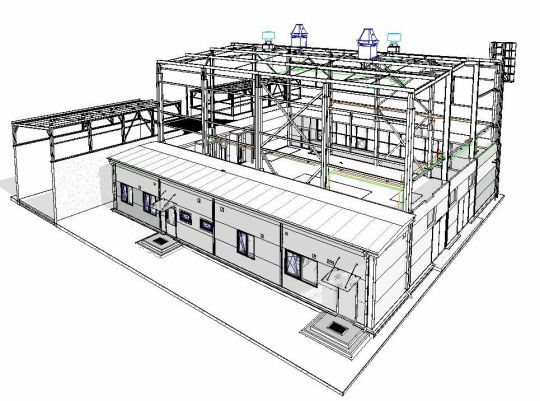
View On WordPress
#architectural design software#as-built documentation#BIM model accuracy#BIM software#Building Information Modeling#collaboration platforms#construction industry advancements#construction management software#construction project efficiency#Construction Technology#cost estimation tools#facility maintenance optimization#facility management solutions#laser scanning technology#LiDAR applications#MEP systems modeling#point cloud integration#project stakeholders collaboration#real-time coordination#structural engineering tools#sustainable building practices
0 notes
Text
AI’s energy use already represents as much as 20 percent of global data-center power demand, research published Thursday in the journal Joule shows. That demand from AI, the research states, could double by the end of this year, comprising nearly half of all total data-center electricity consumption worldwide, excluding the electricity used for bitcoin mining.
The new research is published in a commentary by Alex de Vries-Gao, the founder of Digiconomist, a research company that evaluates the environmental impact of technology. De Vries-Gao started Digiconomist in the late 2010s to explore the impact of bitcoin mining, another extremely energy-intensive activity, would have on the environment. Looking at AI, he says, has grown more urgent over the past few years because of the widespread adoption of ChatGPT and other large language models that use massive amounts of energy. According to his research, worldwide AI energy demand is now set to surpass demand from bitcoin mining by the end of this year.
“The money that bitcoin miners had to get to where they are today is peanuts compared to the money that Google and Microsoft and all these big tech companies are pouring in [to AI],” he says. “This is just escalating a lot faster, and it’s a much bigger threat.”
The development of AI is already having an impact on Big Tech’s climate goals. Tech giants have acknowledged in recent sustainability reports that AI is largely responsible for driving up their energy use. Google’s greenhouse gas emissions, for instance, have increased 48 percent since 2019, complicating the company’s goals of reaching net zero by 2030.
“As we further integrate AI into our products, reducing emissions may be challenging due to increasing energy demands from the greater intensity of AI compute,” Google’s 2024 sustainability report reads.
Last month, the International Energy Agency released a report finding that data centers made up 1.5 percent of global energy use in 2024—around 415 terrawatt-hours, a little less than the yearly energy demand of Saudi Arabia. This number is only set to get bigger: Data centers’ electricity consumption has grown four times faster than overall consumption in recent years, while the amount of investment in data centers has nearly doubled since 2022, driven largely by massive expansions to account for new AI capacity. Overall, the IEA predicted that data center electricity consumption will grow to more than 900 TWh by the end of the decade.
But there’s still a lot of unknowns about the share that AI, specifically, takes up in that current configuration of electricity use by data centers. Data centers power a variety of services—like hosting cloud services and providing online infrastructure—that aren’t necessarily linked to the energy-intensive activities of AI. Tech companies, meanwhile, largely keep the energy expenditure of their software and hardware private.
Some attempts to quantify AI’s energy consumption have started from the user side: calculating the amount of electricity that goes into a single ChatGPT search, for instance. De Vries-Gao decided to look, instead, at the supply chain, starting from the production side to get a more global picture.
The high computing demands of AI, De Vries-Gao says, creates a natural “bottleneck” in the current global supply chain around AI hardware, particularly around the Taiwan Semiconductor Manufacturing Company (TSMC), the undisputed leader in producing key hardware that can handle these needs. Companies like Nvidia outsource the production of their chips to TSMC, which also produces chips for other companies like Google and AMD. (Both TSMC and Nvidia declined to comment for this article.)
De Vries-Gao used analyst estimates, earnings call transcripts, and device details to put together an approximate estimate of TSMC’s production capacity. He then looked at publicly available electricity consumption profiles of AI hardware and estimates on utilization rates of that hardware—which can vary based on what it’s being used for—to arrive at a rough figure of just how much of global data-center demand is taken up by AI. De Vries-Gao calculates that without increased production, AI will consume up to 82 terrawatt-hours of electricity this year—roughly around the same as the annual electricity consumption of a country like Switzerland. If production capacity for AI hardware doubles this year, as analysts have projected it will, demand could increase at a similar rate, representing almost half of all data center demand by the end of the year.
Despite the amount of publicly available information used in the paper, a lot of what De Vries-Gao is doing is peering into a black box: We simply don’t know certain factors that affect AI’s energy consumption, like the utilization rates of every piece of AI hardware in the world or what machine learning activities they’re being used for, let alone how the industry might develop in the future.
Sasha Luccioni, an AI and energy researcher and the climate lead at open-source machine-learning platform Hugging Face, cautioned about leaning too hard on some of the conclusions of the new paper, given the amount of unknowns at play. Luccioni, who was not involved in this research, says that when it comes to truly calculating AI’s energy use, disclosure from tech giants is crucial.
“It’s because we don’t have the information that [researchers] have to do this,” she says. “That’s why the error bar is so huge.”
And tech companies do keep this information. In 2022, Google published a paper on machine learning and electricity use, noting that machine learning was “10%–15% of Google’s total energy use” from 2019 to 2021, and predicted that with best practices, “by 2030 total carbon emissions from training will reduce.” However, since that paper—which was released before Google Gemini’s debut in 2023—Google has not provided any more detailed information about how much electricity ML uses. (Google declined to comment for this story.)
“You really have to deep-dive into the semiconductor supply chain to be able to make any sensible statement about the energy demand of AI,” De Vries-Gao says. “If these big tech companies were just publishing the same information that Google was publishing three years ago, we would have a pretty good indicator” of AI’s energy use.
19 notes
·
View notes
Text
honestly as a writer. i feel like ultimately all argument based on AI as "not real art" and "inferior quality" is gonna be doomed very soon, in a sense of like, near-to-mid future. im not some "OMG, true AGI by or before 2030!!!" over-optimist dudebro, or their cousins the doomer dudebros who watch too much Terminator and play too much Warhammer 40K (In part because determining what counts as AGI and determining what exactly it is a given person even means by AGI is kinda an inherently fucky set of questions) but like. I do feel like by 2035, AI is going to be able to make things that are often almost impossible to discern as "not real art" like when extrapolating from how much better it got in 5 years (2020 to now), even in spite of the pandemic, giving it ten to get here makes total sense to me this also is relevant to another thing: even when we project something like how much power data centers will be using, projections can in fact be wrong. they were often wrong in that they were way too conservative about estimating solar and battery adoption, for instance. especially because like. when you just talk to char.ai you are absolutely not experiencing a pinnacle of current technology. meanwhile a wealthy studio could have a highly specialized, dedicated, much higher-budget model with way more raw power, more energy-efficient hardware and software, and dedicated equipment at their disposal by 2035 which straight up doesn't worry me in regards to energy. again, many predictions about solar and battery improvements were in fact *too conservative*. and on a more fundamental level. my other beef with the argument is that like. at a certain point, when you strip away the quasi-spiritual assumptions about a human "spark" to creativity I feel my process is not all that wildly different from an AI at all in terms of the basic steps, it's just the approach that's different. like. basically it goes. 1: Something in my life or environment prompts me to have an idea 2: I pull from past data and ideas I've absorbed to flesh the idea out and give it a proper structure 3: Inevitably, the idea is essentially a recombination of what I've already seen before. The "creativity" largely boils down to presenting and recombining the data in new ways. I believe a difference arises in that humans are more able to see, discover, and speculate on new connections between data, and parse the data in a more layered, nuanced, and abstract way that generates these connections more effectively. But fundamentally, they still relied on data. Nothing really happened "ex nihilo". Therefore, I fully believe this difference is quite temporary. All of this sounds completely possible for an AI ten years from now to mimic in a way that is outwardly convincing. A sort of "parallel foresight" function, the ability to actively interpret and analyze its own outputs with multiple alternate angles/layers and extrapolate further branching trains of thought from there, then dynamically switch tracks and determine the most desired interpretation according to user feedback and guidance, seems quite doable, as resources and algorithms continue to grow cheaper and more efficient. In theory, this would naturally integrate well with more progress in maximizing efficiency in compressing AI memory, and having AI go reference past topics and external information only when the finer detail is actually necessary. Thus, the "parallel foresight" can be done far more efficiently.
And thus result in a system that effectively is, in fact, being creative. Because creativity is likely just... not actually as special as a lot of us like to assume.
3 notes
·
View notes
Text
Cost of Setting Up an Electric Vehicle Charging Station in India (2025 Guide)

With India accelerating its transition to electric mobility, the demand for EV charging stations is growing rapidly. Whether you're a business owner, real estate developer, or green tech enthusiast, setting up an electric vehicle (EV) charging station is a promising investment. But how much does it really cost to build one? Let's break it down.
Before diving into the costs, it's important to understand the types of EV chargers and the scope of services provided by modern EV charging solution providers like Tobor, a rising name in the EV infrastructure space offering smart, scalable, and efficient EV charging solutions across India.
Types of EV Charging Stations
Understanding the charger types is essential, as this heavily influences the overall cost:
1. AC Charging Stations
AC (Alternating Current) chargers are typically used for slower charging applications, ideal for residential societies, office complexes, and commercial locations with longer dwell times.
Level 1 Chargers: 3.3 kW output, suitable for two- and three-wheelers.
Level 2 Chargers: 7.2 kW to 22 kW, suitable for four-wheelers (e.g., home or workplace).
2. DC Fast Charging Stations
DC (Direct Current) chargers are used where quick charging is required, such as highways, malls, or public parking zones.
DC Fast Chargers: Start from 30 kW and go up to 350 kW.
They can charge an electric car from 0 to 80% in under an hour, depending on the vehicle.
Cost Breakdown for EV Charging Station Setup
The total cost to set up an electric car charging station in India can vary depending on the type of charger, infrastructure, and location. Here is a detailed breakdown:
1. EV Charging Equipment Cost
The cost of the electric car charger itself is one of the biggest components:
AC Chargers: ₹50,000 to ₹1.5 lakh
DC Fast Chargers: ₹5 lakh to ₹40 lakh (depending on capacity and standards like CCS, CHAdeMO, Bharat DC-001)
Tobor offers a range of chargers including TOBOR Lite (3.3 kW), TOBOR 7.2 kW, and TOBOR 11 kW – suitable for home and commercial use.
2. Infrastructure Costs
You’ll also need to invest in site preparation and power infrastructure:
Land Lease or Purchase: Costs vary widely by city and location.
Electrical Upgrades: Transformer, cabling, and power grid integration can cost ₹5 to ₹10 lakh.
Civil Work: Parking bays, shelter, lighting, signage, and accessibility features – ₹2 to ₹5 lakh.
Installation: Depending on charger type and electrical capacity, installation can range from ₹50,000 to ₹3 lakh.
3. Software & Networking Costs
Smart EV charging stations are often connected to networks for billing, load management, and user access:
EVSE Management Software: ₹50,000 to ₹2 lakh depending on features (Tobor integrates smart software as part of its offering).
Mobile App Integration: Enables users to find, reserve, and pay at your station.
OCPP Protocols: Ensures interoperability and scalability of your station.
4. Operational & Maintenance Costs
Running an EV charging station includes recurring costs:
Electricity Bills: ₹5–₹15 per kWh, depending on the state and provider.
Internet Connectivity: ₹1,000–₹2,000 per month for online monitoring.
Station Maintenance: ₹50,000 to ₹1 lakh annually.
Staff Salaries: If you have on-site attendants, this could range ₹1 to ₹3 lakh annually.
Marketing: ₹50,000 or more for signage, promotions, and digital visibility.
Total Investment Required
Here’s an estimate of the total cost based on the scale of your EV charging station:
Type
Estimated Range
Level 1 (Basic AC)
₹1 lakh – ₹3 lakh
Level 2 (Commercial AC)
₹3 lakh – ₹6 lakh
DC Fast Charging Station
₹10 lakh – ₹40 lakh
These costs can vary based on customization, location, and electricity load availability. Tobor offers tailored solutions to help you choose the right hardware and software based on your needs.
Government Support and Subsidies
To promote EV adoption and reduce the cost of EV infrastructure:
FAME II Scheme: Offers capital subsidies for charging stations.
State Incentives: States like Delhi, Maharashtra, Kerala, and Gujarat offer reduced electricity tariffs, subsidies up to 25%, and faster approvals.
Ease of Licensing: As per Ministry of Power guidelines, EV charging is a de-licensed activity, making it easier to start.
Return on Investment (ROI)
An EV charging station in a good location with growing EV traffic can break even in 3 to 5 years. Revenue comes from:
Charging fees (per kWh or per session)
Advertisement and partnerships
Value-added services (e.g., parking, cafés, shopping zones nearby)
Final Thoughts
With India's electric mobility market booming, setting up an EV charging station is not only a sustainable choice but also a profitable long-term investment. Whether you're a fleet operator, business owner, or infrastructure developer, now is the perfect time to invest.
For reliable equipment, integrated software, and end-to-end EV charging solutions, Tobor is one of the leading EV charging solution providers in India. From residential setups to large-scale commercial EVSE projects, Tobor supports every step of your journey toward green mobility.
2 notes
·
View notes
Text
The Secret to Unlocking 40% Growth in Engineering
In the dynamic world of engineering, thriving isn’t about working harder — it’s about working smarter. The advent of Industry 4.0 is revolutionizing how businesses operate, with cutting-edge technologies like AI, IoT, and automation reshaping the landscape. For engineering firms, digital transformation means more than adopting new tools; it’s about unlocking untapped potential. Picture streamlined processes, data-driven decisions, and a competitive edge in the market. It’s not just about adapting to change but leveraging it to deliver remarkable results for your team and customers.
Are you ready to embrace innovation and grow exponentially?
1. The Hidden Costs of Outdated IT Systems
Legacy IT systems may seem dependable, but they come with hidden drawbacks that can hinder growth:
Growth Bottlenecks: According to Forbes, 87% of engineering firms face delays due to outdated systems.
Missed Innovations: Gartner research shows modern tools increase innovation success rates by 20%, an edge legacy systems fail to provide.
2. Common Pain Points in Engineering Firms
Engineering companies encounter persistent challenges that slow them down:
Inefficiency: McKinsey estimates a 10% productivity loss from manual processes.
Collaboration Gaps: Salesforce highlights that siloed data hampers teamwork by 33%.
System Downtime: Frequent failures in aging systems lead to delays and missed deadlines, affecting client satisfaction.
3. Transforming Challenges into Opportunities
The right digital solutions can turn these hurdles into growth opportunities. By upgrading IT infrastructure and adopting modern approaches, engineering firms can achieve:
Cloud Migration: Transitioning to platforms like AWS, Azure, or Google Cloud can deliver 30–40% cost savings and enhanced scalability.
AI and Machine Learning: Integrating AI-driven predictive analytics improves operational efficiency by 25–30%.
Product Engineering Services: Tailored software solutions streamline operations and cut costs by up to 35%.
4. Enhanced Security and Compliance
Outdated systems are prime targets for costly security breaches. Adopting advanced security protocols reduces vulnerabilities by up to 60%, protecting sensitive data and maintaining your business’s reputation.
5. The ROI of Digital Transformation
Modernizing your IT infrastructure is more than a technology upgrade — it’s a strategic investment that pays off:
Reduce operational inefficiencies by 30–35%.
Boost system performance by 25–30%.
Lower maintenance costs by 20–25%.
Curious to Learn More? Discover how a well-planned digital transformation can help engineering firms overcome challenges, achieve sustainable growth, and stay ahead in an ever-changing market. Take the leap into the future and unlock your firm’s full potential today!
3 notes
·
View notes
Text
GWitch Onscreen Text: Episode 7
This is part eight of my attempt to transcribe and discuss all the monitor text in g witch! Because I got worms! We're on episode 7, "Shall We Gundam?"

Now then. Shall we? (Gundam?)

Not text, but in the opening, Vim tells the Peil Witches that it's despicable of them to breach the Cathedra Agreement, only for one of them to respond that she believes he would know something about that himself. This is our first hint towards the existence of the Schwarzette.

Now to the real text, we see a mockup of the Pharact of it's systems in this opening as well.
Here, we see that the Pharact is 19.1m and 57.1t.
The Blue and Red labels are tough to make out, but they each respectively say the same thing. I'll make my best guess: Blue labels: G-O | SYS-GUND CHH Red Labels: GUND FORMAT | CORAX UNITS
The Corax Units are the name of the Pharacts GUND Bits, and we know those use the Gund Format, so that checks. We saw 'CHH' on 4's data graph, still not sure what it means though.
I think the floating red text says GA - MS//RACT, but I can't be sure. The big label in the center says GUND-ARM FP/A-77.

Not text, but I think Sarius and Delling is another relationship I wish we got to see more of. Delling actually worked directly under Sarius within Grassley before eventually becoming President of the entire Group.


During the scene in the greenhouse, we get a look at the program on Miorine's monitor. No way to read the actual text on it from this shot, but we do see Miorine verify the name of one of the brands of fertilizer before presumably typing it on the screen, so it's probably safe to assume it's tracking the general maintenance of the tomatoes.


We never get a completely clear shot of the Incubation Party Invitation (Because it just can never be easy) But I'll make my best estimate of it from the shots we DO get.
TEXT: SUBJECT: INCUBATION EVENT PARTY INVITATION & APPLICATION GUIDELINES FROM: BENERIT GROUP PROTOCOL MANAGEMENT OFFICE
INVITATION The Benerit Group has the great honor of inviting you to the 15th Incubation Event.

Off topic but this scene has one of my favorite Miorine Noises in the whole show. It's so good. Take a listen. She is Flabbergasted.

TEXT: 15th INCUBATION EVENT PARTY Hosted by BENERIT GROUP
Pretty...


The Mobile Suits on display aren't named, but the one in the back right is actually the YOASOBI Collaboration Version of the Demi Trainer.

(YOASOBI are the musical duo that composed Shukufuku)

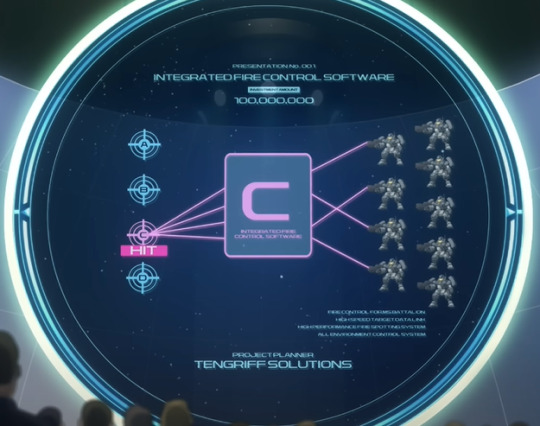
I wont bore you with a 1 to 1 transcription of the text of this first presentation, so here's the general overview.
This is PRESENTATION No. 001 for the Incubation Party from TENGRIFF SOLUTIONS. They're asking for 100,000,000 to develop an INTEGRATED FIRE CONTROL SOFTWARE. What that means generally is that they want to develop a software that can automatically correct/redirect an MS's aim to a specific target, in both Individual and Team based MS Operations. The benefits of this system are: AUTO TRAJECTORY CORRECTION AUTO CORIOLIS CORRECTION AUTO GRAVITY CORRECTION FIRE CONTROL FORMS BATTALION HIGH SPEED TARGET DATA LINK HIGH PERFORMANCE SPOTTING SYSTEM ALL ENVIRONMENT CONTROL SYSTEM


Unfortunately this project did not meet the 75% formation requirement and DIED

Funny Shaddiq Expression. I don't think he ever makes a face like this for the rest of the series.

[Pointing] One of the two times throughout the series we see any pat of Notrette. The only other time is in the second season opening.


We see VIM JETURK on Lauda's screen when he's calling him. (The "Accept" button actually darkens when Lauda taps it)


This scene is our first look into Nika's role as a go between for Shaddiq, and also how it'll be a main point of conflict between her and Martin, as he's the one who sees the two of them talking.
(Also, Shaddiq has a habit of abruptly lowering the tone of his voice to signify a change in his demeanor. If you ever rewatch the series again, try and listen for it ! He does it all the time)

TEXT (Top to Bottom) BENERIT GROUP NETWORK CONNECTION ^ ACCESS REQUEST ACCESS POINT: STAGE SCREEN LINE CODE: 2915.455X.eX STATUS: APPROVAL PENDING LINE CODE: Yds2.4006.40 LINE CODE: 2945.Rr50.52 LINE CODE: KL40.024c.R2
Miorine's phone when she requests access to the Stage Screen

When she gets approved and begins connecting, her phone displays this loading screen called SYNCHRONIZE

And the stage screen is displaying that same loading screen for a split second before fully connecting.
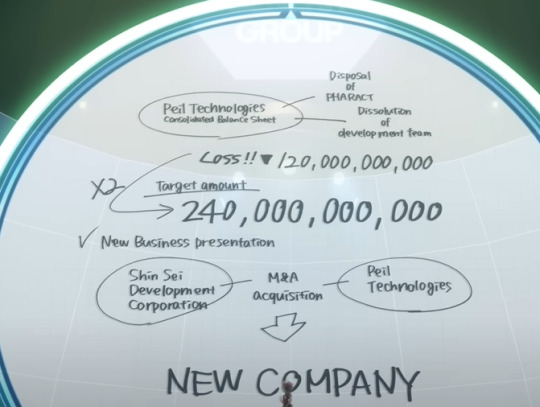
Miorine explains what this all means in the show proper, so I feel it'd be redundant to explain it, but here's the presentation anyhow.

We also see the UI of the program Mio is using in the presentation. She only uses the MEMO tab, but we see that there's a TEXT and PICT tab as well.

When Miorine takes the phone back from Delling, the investment status has reached 3%, meaning he invested 7,200,000,000 in the company. Mama Mia !

Business Successfully Formed!
But it seems that they only reached the bare minimum amount, 75%. So of the 240,000,000,000, she requested, the company earned at LEAST 180,000,000,000
We also see that Miorine’s presentation is only the 5th one of the night.
And that's all! Thank you very much! Unfortunately I can't leave anymore images because I've somehow reached the image limit :(
Instead I leave you with this: Go back and watch the scene where Miorine and Suletta see Prospera and Godoy. After the scene where Suletta greets him, they keep drawing his face wrong. Okay! Goodbye....!
Click here to go to Episode 8!
Click here to go to the Masterpost!
28 notes
·
View notes
Text
The Evolution of BIM: From 2D Drafting to 7D BIM
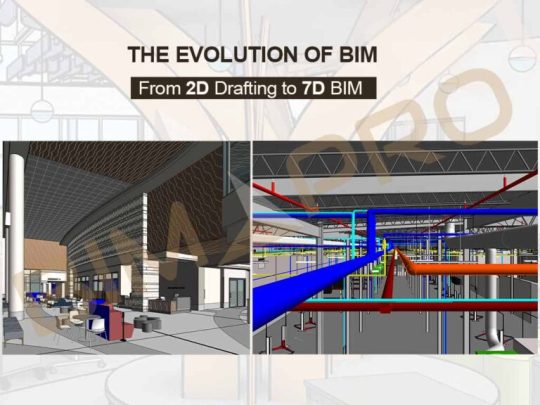
The construction industry has witnessed a remarkable transformation over the past few decades, driven by technological advancements. One of the most significant innovations is Building Information Modeling (BIM). What started as simple 2D drafting has evolved into a comprehensive system encompassing multiple dimensions. From design to maintenance, BIM has revolutionized the way we plan, construct, and manage buildings. In this blog, we will explore the journey of BIM from its early days to the highly advanced 7D BIM we see today.
The Era of 2D Drafting: The Beginning
Before the advent of BIM, architects, engineers, and designers relied on 2D drafting techniques. Blueprints and technical drawings were manually created on paper, requiring immense precision and effort. The introduction of computer-aided design (CAD) in the 1960s and 1970s brought a significant shift, allowing professionals to create digital 2D drawings. However, these drawings remained static representations, often leading to errors, miscommunication, and time-consuming revisions. The lack of data integration meant that project information was scattered, leading to inefficiencies in project execution and management.
Moreover, 2D drafting required extensive manual labor for each stage of the design process. Any changes in the design had to be redrawn from scratch, consuming valuable time. Coordination between different teams was also challenging, as changes in one discipline often led to inconsistencies in others. Errors were only discovered during construction, resulting in costly rework and delays. Additionally, quantity take-offs and bill of materials (BOM) had to be calculated manually, increasing the risk of miscalculations and cost overruns.
The Transition to 3D Modeling: A Game Changer
The limitations of 2D drafting led to the development of 3D modeling. In the late 20th century, software like AutoCAD, Revit, and ArchiCAD introduced the concept of three-dimensional design. 3D modeling provided a more realistic and detailed representation of structures, improving visualization and coordination among stakeholders. Architects and engineers could now see their designs in a virtual environment before construction began, allowing for better planning and reducing costly errors.
Unlike 2D drawings, 3D models allowed for a more intuitive understanding of spatial relationships. Teams could detect clashes between different systems, such as plumbing and electrical, before construction, leading to a significant reduction in errors. However, despite the added dimension, it still lacked data integration and intelligence, as it mainly focused on geometry rather than project information management. At this stage, Level of Development (LOD) concepts started emerging, enabling different stakeholders to define and refine the details of the BIM model at different stages of the project lifecycle.

4D BIM: Adding the Time Dimension
The next breakthrough in BIM came with the introduction of the fourth dimension: time. 4D BIM integrates project scheduling with 3D models, enabling stakeholders to visualize the construction sequence over time. This advancement improved project planning, reduced delays, and enhanced collaboration among teams. Contractors could simulate different scenarios, identify potential bottlenecks, and optimize construction workflows.
By linking the construction timeline to the 3D model, project managers could anticipate potential issues, allocate resources efficiently, and ensure smoother project execution. 4D BIM allowed teams to see when each component of the project would be constructed, facilitating better coordination between trades and minimizing on-site conflicts. As a result, construction projects became more predictable, reducing downtime and increasing efficiency.
5D BIM: Incorporating Cost Management
Cost estimation has always been a critical aspect of construction projects. 5D BIM brought financial management into the equation by linking cost data with the 3D model and project schedule. This integration provided accurate cost forecasting, real-time budget updates, and improved decision-making. Stakeholders could analyze cost variations, track expenses, and ensure financial control throughout the project lifecycle.
With 5D BIM, cost estimators and project managers could evaluate different design alternatives and their financial impact, ultimately helping in budget optimization and cost-effective decision-making. Cost changes due to material choices, design modifications, or construction sequences could be assessed in real time, preventing budget overruns. Automated quantity take-offs became more efficient and accurate, ensuring that project cost estimates aligned closely with actual construction costs. This real-time tracking of costs made construction more financially transparent, ensuring stakeholders had a clear understanding of budget allocations at every stage.
6D BIM: Enhancing Sustainability and Facility Management
As sustainability became a key focus in the construction industry, 6D BIM emerged to address environmental concerns. This dimension incorporates energy analysis, lifecycle assessment, and sustainability metrics into BIM models. Building owners and facility managers can use 6D BIM to optimize energy efficiency, reduce carbon footprints, and plan for long-term maintenance.
Additionally, it aids in predictive maintenance by providing insights into building performance over time. With real-time data and simulations, sustainability goals such as energy efficiency, material durability, and operational cost reductions can be achieved, ensuring environmentally responsible building designs. Green building certifications such as LEED and BREEAM can be seamlessly integrated into the BIM model, allowing for data-driven decision-making in sustainability planning.
By leveraging 6D BIM, facility managers can track energy consumption, perform preventive maintenance, and monitor the building’s carbon footprint. It enables owners to make data-driven decisions that enhance the building’s efficiency and extend its lifespan, ultimately leading to significant cost savings and environmental benefits. COBie (Construction-Operations Building Information Exchange) standards also play a critical role at this stage, ensuring that asset data is structured and efficiently transferred for use in facility management.
7D BIM: The Future of Building Management
The most advanced stage of BIM, 7D BIM, integrates facility management with real-time data. It allows stakeholders to manage the entire lifecycle of a building, from design to demolition. By incorporating asset management, maintenance scheduling, and IoT integration, 7D BIM enhances operational efficiency and reduces maintenance costs.
Building owners can track the performance of building components, automate maintenance tasks, and ensure long-term sustainability. With the growing adoption of smart buildings and IoT-enabled systems, 7D BIM is paving the way for more connected, efficient, and resilient building management practices. Facility managers can use digital twins of buildings to simulate operational scenarios, predict maintenance needs, and improve asset longevity.
Through integration with IoT, sensors can provide real-time data on occupancy, temperature, and equipment performance, enabling automated responses and predictive maintenance. This not only enhances comfort and safety but also significantly reduces operational costs, making 7D BIM an essential tool for modern building management. Furthermore, as-built BIM models ensure that facility managers have an accurate digital representation of the constructed building, enabling informed decision-making throughout the building’s lifecycle.
Benefits of BIM Evolution:
Here are some expanded benefits of BIM evolution:
Improved Collaboration and Coordination Accurate Quantity Take-Offs and Cost Estimation Reduced Errors, Rework, and Risks Enhanced Time Management and Scheduling Improved Facility Management and Lifecycle Analysis Sustainability and Energy Efficiency Higher Level of Development (LOD) for Better Detailing
Conclusion
The evolution of BIM has transformed the way we design, construct, and manage buildings. From simple 2D drawings to the intelligent and data-driven 7D BIM, the construction industry has embraced a new era of efficiency, sustainability, and innovation. As technology continues to advance, we can expect even more dimensions and capabilities to be integrated into BIM, shaping the future of architecture and engineering. Whether you are an architect, contractor, or building owner, understanding and leveraging BIM is no longer an option but a necessity for success in the modern construction landscape.
1 note
·
View note
Text
Organizations Market Insights: 7 Game-Changing Innovations to Watch

Explosive Market Growth Driven by Institutional Demand and B2B Innovation
The global organizations market is entering a transformative phase, with projections estimating a surge from USD 7.19 billion in 2022 to over USD 1,374.15 billion by 2031, registering a CAGR of 35.5% from 2024 to 2031. This rapid ascent is propelled by the rising demand across public, private, and non-profit sectors for comprehensive operational solutions, digitization, and long-term service integrations.
This organizations market encompasses a diverse array of business-to-business (B2B) interactions, with organizations procuring vast volumes of goods and services essential for internal functions and external service delivery. The key distinguishing feature of this sector is its emphasis on value-driven procurement, strategic supplier relationships, and multi-layered decision-making structures.
Request Sample Report PDF (including TOC, Graphs & Tables): https://www.statsandresearch.com/request-sample/40468-global-organizations-market
Organizations Market Segmentation: Diverse Needs, Unified Demand
By Organizational Type
Private Sector
Organizations in this segment prioritize return on investment, agility, and innovation. Tech firms, manufacturers, and service providers drive procurement, investing in automation tools, logistics, enterprise software, and cybersecurity solutions.
Public Sector
Governments at all levels invest in infrastructure modernization, citizen services, and digital governance, acquiring long-term solutions in healthcare, education, defense, and transportation.
Non-Profit Sector
Focused on mission delivery over profit, these organizations allocate budgets toward solutions that enhance social impact, such as community management systems, sustainability technologies, and donor engagement platforms.
Get up to 30%-40% Discount: https://www.statsandresearch.com/check-discount/40468-global-organizations-market
By Product and Services
Raw Materials: Core components like chemicals, metals, and polymers that feed manufacturing and construction.
Finished Goods: Includes machinery, IT hardware, medical devices, and other end-use assets.
Durable Goods: Vehicles, production machinery, and infrastructure components.
Consumables: Everyday operational inputs—paper, lab reagents, medical disposables.
Service Verticals:
Consulting: Strategic and operational optimization across sectors.
IT Services: Digital transformation, cybersecurity, cloud infrastructure, SaaS.
Maintenance and Support: Preventive servicing and troubleshooting to maximize uptime.
Training and Education: Skill enhancement aligned with emerging tech and regulatory requirements.
Sector-Specific Applications: Customization at Scale
Healthcare
Technology is redefining patient engagement, diagnostics, and operational workflows. Investments in Electronic Health Records (EHRs), medical IoT devices, and AI-powered diagnostic tools are pivotal.
Education
Demand for Learning Management Systems (LMS), virtual classrooms, and administrative software is intensifying as institutions modernize and scale their operations globally.
Finance
Financial organizations are deploying advanced analytics, fraud detection systems, and compliance engines to manage increasingly complex portfolios and regulatory landscapes.
Manufacturing
Driven by Industry 4.0, manufacturers are integrating MES systems, automation robotics, supply chain monitoring, and predictive maintenance platforms.
End-User Landscape: Decision-Making Dynamics and Tailored Solutions
Enterprises
Large-scale operations demand integrated ecosystems—ERP, CRM, HRM systems, and IoT networks—all with cross-border functionality and data analytics capabilities.
Small and Medium Businesses (SMBs)
Cost-effective, scalable solutions are paramount. Cloud-based services, modular ERP systems, and affordable IT support are highly sought-after.
Government Agencies
Prioritizing transparency, efficiency, and citizen-centric services, agencies procure enterprise-grade digital infrastructure, secure data platforms, and AI governance tools.
Educational Institutions
A shift towards smart campuses and digitized learning ecosystems is catalyzing demand for IT infrastructure, real-time student tracking systems, and data-driven learning analytics.
Competitive Ecosystem: Leaders Shaping Organizational Digitization
Prominent players are pioneering the evolution of the organizations market, leveraging robust product portfolios, cloud ecosystems, and international presence. These include:
IBM – Cognitive business and AI-driven transformation.
Microsoft – Cloud-first enterprise solutions and productivity software.
Oracle – Database systems and ERP platforms.
SAP – Business process optimization and automation.
Salesforce – CRM innovation and customer experience platforms.
Dell Inc. – Scalable IT infrastructure.
Cisco Systems, Inc. – Networking and security.
Amazon Web Services (AWS) – Cloud computing and AI services.
Accenture – Strategy consulting and digital execution.
Hewlett Packard Enterprise (HPE) – Edge-to-cloud platforms and intelligent edge.
These firms, alongside emerging disruptors, are aggressively competing through innovation, ecosystem partnerships, and vertical-specific customizations.
Regional Organizations Market Dynamics: Global Influence, Local Adaptation
North America
Characterized by early technology adoption and mature infrastructure, with the U.S. leading government digitization, cloud migration, and enterprise IT transformation.
Asia-Pacific
Rapid industrial growth and digital inclusion initiatives in China, India, Japan, and ASEAN nations are catalyzing exponential market expansion.
Europe
Focus on compliance, sustainable procurement, and smart public services underpins robust demand in Germany, UK, France, and Italy.
Middle East & Africa
Smart city initiatives and public-private partnerships are pivotal to regional growth, particularly in the GCC nations.
South America
Increasing investments in public services and education, notably in Brazil, are enhancing the role of digital solutions in regional development.
Organizations Market Forecast Through 2031
This growth trajectory reflects the unprecedented convergence of digital transformation, globalization of service procurement, and institutional modernization. Procurement behavior is increasingly favoring long-term contracts, as-a-service models, and modular solution architectures, facilitating both adaptability and ROI.
Strategic Imperatives for Organizations Market Participants
Vertical Specialization: Offer sector-specific configurations for healthcare, finance, manufacturing, and public services.
Sustainability Integration: Align procurement solutions with ESG goals and circular economy practices.
AI and Automation: Deploy intelligent systems that reduce human error and increase operational speed.
Cloud and Edge Synergy: Combine the scalability of cloud with the real-time benefits of edge computing.
Cybersecurity First: Integrate zero-trust security architecture from procurement to deployment.
Purchase Exclusive Report: https://www.statsandresearch.com/enquire-before/40468-global-organizations-market
Conclusion: The Future of Organizational Procurement
The organizations market is on an unrelenting growth trajectory, reshaping how institutions across sectors and regions invest in infrastructure, services, and digital tools. To remain competitive, stakeholders must embrace tailored innovation, ecosystem integration, and client-centric strategies. The era of reactive procurement is over—strategic, proactive, and data-driven engagement defines the future of organizational marketplaces.
Our Services:
On-Demand Reports: https://www.statsandresearch.com/on-demand-reports
Subscription Plans: https://www.statsandresearch.com/subscription-plans
Consulting Services: https://www.statsandresearch.com/consulting-services
ESG Solutions: https://www.statsandresearch.com/esg-solutions
Contact Us:
Stats and Research
Email: [email protected]
Phone: +91 8530698844
Website: https://www.statsandresearch.com
1 note
·
View note
Text
Integrated Cluster Development Scheme: A Visionary Initiative by Col Rajyavardhan Rathore

The Integrated Cluster Development Scheme (ICDS), launched under the leadership of Colonel Rajyavardhan Rathore, marks a significant milestone in fostering economic growth and social development across Rajasthan. Focused on empowering small-scale industries, artisans, and rural entrepreneurs, this initiative is set to transform traditional production clusters into engines of innovation, employment, and sustainability.
In this article, we’ll explore the goals, features, and potential impact of this scheme on Rajasthan’s economy and its people.
What is the Integrated Cluster Development Scheme?
The ICDS aims to modernize and strengthen production clusters in Rajasthan, encompassing sectors like handicrafts, textiles, food processing, and small-scale manufacturing. By integrating infrastructure development, skill training, and financial incentives, this scheme provides a holistic framework to promote regional growth.
Col Rajyavardhan Rathore’s Vision Behind the Scheme
Col Rajyavardhan Rathore, a staunch advocate for rural development and economic empowerment, believes that: “Clusters are the backbone of our economy. Strengthening them means empowering our artisans, entrepreneurs, and communities for a brighter, self-reliant Rajasthan.”
His leadership in shaping the scheme reflects a commitment to harnessing the state’s cultural heritage and industrial potential for sustainable development.
Key Objectives of the ICDS
Economic Growth: Enhance the productivity and profitability of Rajasthan’s traditional and emerging clusters.
Job Creation: Generate employment opportunities, particularly in rural and semi-urban areas.
Skill Development: Provide training to workers and entrepreneurs in modern techniques and global standards.
Sustainability: Promote eco-friendly practices in production and infrastructure.
Global Competitiveness: Enable clusters to compete effectively in national and international markets.
Highlights of the Integrated Cluster Development Scheme
1. Infrastructure Upgradation
Establishment of common facility centers (CFCs) equipped with modern tools and machinery.
Development of dedicated industrial parks and cluster zones.
Improved connectivity through roads, railways, and digital infrastructure.
2. Financial Support
Subsidies and Grants: Financial assistance for purchasing equipment and upgrading technology.
Cluster Development Funds: Allocation of funds for infrastructure, marketing, and research.
Low-Interest Loans: Easy access to credit for small businesses and artisans.
3. Capacity Building
Skill Training Programs: Workshops on modern production techniques, quality control, and innovation.
Entrepreneurship Development: Training in business management and digital marketing.
Global Exposure: Participation in national and international trade fairs.
4. Promoting Innovation and Technology
Establishment of innovation hubs within clusters to encourage research and development.
Integration of digital tools such as e-commerce platforms and management software.
5. Focus on Key Sectors
Handicrafts and Textiles: Revitalizing traditional crafts with modern designs.
Food Processing: Expanding the scope of agro-based industries with value addition.
Renewable Energy Clusters: Promoting solar and wind energy production units.
Impact of the Scheme on Rajasthan
Economic Benefits
An estimated 20–30% increase in cluster productivity within the first three years.
Boost in state GDP through enhanced industrial output and exports.
Social Empowerment
Improved livelihood opportunities for over 50,000 workers and artisans.
Empowerment of women and marginalized communities through focused support programs.
Sustainability
Adoption of eco-friendly production techniques, reducing the environmental footprint.
Examples of Targeted Clusters
Jaipur Handicrafts Cluster
Known for its exquisite jewelry, blue pottery, and textiles, Jaipur’s cluster will benefit from marketing support and infrastructure development.
Jodhpur Furniture Cluster
Famous for its wooden furniture, this cluster will see investments in modern tools and export promotion.
Bikaner Agro Cluster
A hub for food processing and agricultural produce, Bikaner’s cluster will receive funding for value-added processing units.
How the Scheme Promotes Self-Reliance
Aligned with the “Make in India” and “Atmanirbhar Bharat” initiatives, the ICDS focuses on reducing import dependency by enhancing local production capabilities. By enabling small businesses to scale up and reach global markets, it fosters a self-reliant ecosystem.
Col Rajyavardhan Rathore’s Commitment to Progress
Col Rathore has been instrumental in advocating policies that blend tradition with technology. His leadership ensures that the ICDS not only preserves Rajasthan’s cultural identity but also propels it into the future.
In his words: “This scheme is a tribute to the hardworking people of Rajasthan who keep our traditions alive while embracing the opportunities of the modern world.”
A New Dawn for Rajasthan’s Clusters
The Integrated Cluster Development Scheme is a game-changer for Rajasthan’s economy. By focusing on modernization, skill enhancement, and financial support, it promises to uplift thousands of artisans, workers, and entrepreneurs while showcasing Rajasthan’s rich heritage to the world.
This initiative is not just about economic development; it’s about empowering communities, celebrating culture, and creating a sustainable future for all.
4 notes
·
View notes
Text
On April 15, U.S. chipmaker Nvidia published a filing to the U.S. Securities and Exchange Commission indicating that the government has restricted the company from selling its less advanced graphics processing unit (GPU)—the H20—to China. The company is now required to obtain a license from the U.S. Commerce Department’s Bureau of Industry and Security to sell the H20 and any other chips “achieving the H20’s memory bandwidth, interconnect bandwidth, or combination thereof” to China, according to the filing.
Similarly, a filing from AMD stated that the firm is now restricted from selling its MI308 GPU to China—and likely any chips that have equal or higher performance in the future. Intel’s artificial intelligence accelerator Gaudi will also be restricted under the new control threshold, which reportedly appears to limit chips with total DRAM bandwidth of 1,400 gigabytes per second or more, input/output bandwidth of 1,100 GB per second or more, or a total of both of 1,700 GB per second or more.
The possible new threshold not only restricts the advanced chips that were already controlled but also the less advanced chips from Nvidia, AMD, and other chipmakers, including Nvidia’s H20, AMD’s MI308X, and Intel’s Gaudi, which were used to comply with the export control threshold and intended primarily for sale in the Chinese market.
The new restriction came roughly a week after NPR reported that the Trump administration had decided to back off on regulating the H20. Prior to that report, curbs on the H20 and chips with comparable performance had been widely anticipated by analysts on Wall Street, industry experts in Silicon Valley, and policy circles in Washington.
The latest set of chip controls could be seen as following on from export restrictions during the Biden administration and as continuation of the Trump administration’s efforts to limit China’s access to advanced AI hardware. But the new measure carries far-reaching industry implications that could fundamentally reshape the landscape of China’s AI chip market.
The impact of the new rule on the industry is profound. With the new controls, Nvidia is estimated to immediately lose about $15 billion to $16 billion, according to a J.P. Morgan analysis. AMD, on the other hand, faces $1.5 billion to 1.8 billion in lost revenue, accounting for roughly 10 percent of its estimated data center revenue this year.
Yet the implications go beyond immediate financial damage. If the restriction persists, it will fundamentally reshape the Chinese AI chip market landscape and mark the start of a broader retreat for U.S. AI accelerators from China. That includes not only GPU manufacturers such as Nvidia, AMD, and Intel but also firms providing application-specific integrated circuits—another type of chips targeting specific AI workloads, such as Google’s TPU and Amazon Web Servies’ Trainium.
The new rule will make it nearly impossible for U.S. firms such as Nvidia and AMD to design and sell chips that are export-compliant and competitive in the Chinese market. That means these firms’ market share in the Chinese AI chip market will decline over time, as they are forced to withdraw almost all of their offerings of both advanced and less advanced chips while Chinese firms gradually capture the remaining market.
The H20 and the upgraded H20E are already only marginally ahead of their Chinese competitors. Huawei’s latest AI chip Ascend 910C delivers 2.6 times the computational performance of the H20, although it offers 20 percent less memory bandwidth, which is vital for the inference training and reasoning models that are a key part of modern AI.
The H20’s memory bandwidth, along with Nvidia’s widely adopted software stack, a parallel computing platform and programming model that enables efficient GPU utilization for AI, high-performance computing, and scientific workloads, have been key differentiators driving demand from Chinese AI firms and keeping them competitive in the Chinese market. China acquired more than 1 million units of the H20 in 2024 and has been stockpiling the chip in response to looming concerns about controls since early 2025.
The narrowing gap between the H20 and Huawei’s 910C highlights the growing ability of Chinese AI chipmakers to meet domestic compute demand without foreign GPUs. As of today, Huawei’s 910C is in mass production, with units already delivered to customers and broader mass shipments reportedly starting in May. Most recently, Huawei is reportedly approaching customers about testing its enhanced version of the 910-series GPU—the 910D. Its next-generation chip—the Ascend 920—is expected to enter mass production in the second half of 2025.
Notably, Huawei is just one of many Chinese firms poised to fill the gap left by U.S. suppliers. Chinese AI chip companies such as Cambricon, Hygon, Enflame, Iluvatar CoreX, Biren, and Moore Threads are actively developing more competitive domestic AI chips to capture this expanding market.
Over the next few years, Chinese firms such as Alibaba, ByteDance, Baidu, and Tencent will likely continue to rely on existing inventories of Nvidia and AMD chips—such as the H100, H200, H800, and H20—acquired prior to the implementation of export controls. For example, ByteDance’s current GPU inventory in China is rumored to include 16,000-17,000 units of the A100, 60,000 units of the A800, and 24,000-25,000 units of the H800. Its overseas businesses likely have more than 20,000 units of the H100, 270,000 of the H20, and tens of thousands of cards such as the L20 and L40.
Advanced chips, including the limited amount of Nvidia’s Blackwell-series GPUs, may also continue entering the Chinese market via illicit or gray-market channels, given the enduring performance advantage and wide adoption of these chips over most Chinese domestic alternatives. The Blackwell GPUs and other cutting-edge chips could still be sold legally to the oversea data centers of leading Chinese AI companies to potentially train their AI models.
Similarly, other leading Chinese AI firms still possess significant chip stockpiles. Assuming export controls continue to restrict Chinese AI companies’ access to advanced computing resources, existing GPU inventories should still enable model development over the next several years. Typically, GPUs have a four- to five-year depreciation lifecycle, providing a window during which Chinese domestic GPU manufacturers can advance their capabilities and begin supplying more competitive chips to support domestic AI development.
Ultimately, time is now on the Chinese firms’ side. As inventories of foreign GPUs gradually depreciate and become obsolete, Chinese firms are expected to shift toward and adopt more domestically produced AI chips to meet ongoing compute needs at a time when local chipmakers offer more powerful alternatives. China’s overall computing demand will steadily rise, given the continued advancement of the AI industry, and such incremental growth in demand will likely be met by Chinese AI chipmakers.
As a result, the tens of billions of dollars in revenue that would have gone to Nvidia and AMD will be gradually captured by Chinese AI firms in the coming years. In a rough assessment, the latest ban causes Nvidia and AMD instant losses of about $16.5 billion to $17.8 billion—about 70 percent of what Huawei spent on research and development in 2024.
This new market paradigm will not only strengthen the market position and financial sustainability of domestic Chinese AI chipmakers but also enhance their capacity to reinvest in R&D. In turn, this will accelerate innovation, improve competitiveness, and fortify China’s broader AI hardware supply chain—ultimately contributing to the long-term resilience and advancement of Chinese AI capabilities.
More importantly, the growing domestic adoption of Chinese GPUs enables local firms to refine their products more efficiently through accelerated and larger feedback loops from local enterprises. As the Nvidia-led GPU ecosystem stalls and gradually retreats from the Chinese market, this shift creates space for local players to build a domestic GPU ecosystem—one that may increasingly lock out foreign competitors and raise re-entry barriers over time.
A total ban on the H20 would likely slow China’s short-term growth in AI compute capacity by removing a key source of advanced chips. But the medium- to longer-term impact is less clear. Chinese AI companies, as previously noted, remain very capable of developing their AI by using a large number of existing Nvidia and AMD GPUs for the next few years, alongside a growing supply of improving domestic alternatives. The U.S. leadership’s ultimate goal of using export controls to constrain China’s AI development remains uncertain, as the gap between the two countries’ AI model capabilities appears to be narrowing rather than widening.
What is clear, however, is the broader industry impact of the new controls. If sustained, they will mark the beginning of a major withdrawal of U.S. AI chipmakers from the Chinese market—paving the way for a significant boost to domestic Chinese AI chipmakers. In trying to isolate China, the United States may end up giving Chinese firms a leg up.
3 notes
·
View notes
Text
How to Create a Financial Plan for Your Business in 2025
Introduction
A strong financial foundation is the backbone of every successful business. Whether you’re launching a startup or running an established company, knowing how to create a financial plan for your business in 2025 is essential for growth, profitability, and long-term sustainability.

Why Business Financial Planning Is Crucial in 2025
The economic landscape continues to evolve in 2025, influenced by inflation, AI integration, shifting consumer behavior, and a dynamic labor market. That’s why small business financial strategy must be more proactive, data-driven, and flexible than ever before.
✅ Benefits of Financial Planning:
Set clear short- and long-term goals
Improve decision-making with real-time data
Secure funding and build investor confidence
Monitor and control spending
Minimize risks and prepare for emergencies
💡 A well-crafted financial plan is not just a document—it’s a living tool that guides every aspect of your business.
Step 1: Define Your Business Goals
Start by identifying your business goals for 2025. These should be SMART: Specific, Measurable, Achievable, Relevant, and Time-bound.
Examples:
Increase revenue by 20%
Launch a new product line in Q3
Reduce overhead by 15%
Expand into two new markets
🎯 Your goals will shape every part of your financial plan, from budgeting to forecasting.
Step 2: Analyze Your Current Financial Position
Before planning ahead, understand where you stand today. Collect and review key financial statements:
Balance Sheet – Shows assets, liabilities, and equity
Income Statement (Profit & Loss) – Shows revenue and expenses
Cash Flow Statement – Tracks how money moves in and out of your business
💡 Use this data to spot trends, identify problem areas, and evaluate performance over time.
Step 3: Create a Business Budget
Creating a business budget is one of the most important components of business financial planning. A solid budget helps you plan expenses, monitor profits, and prepare for seasonal fluctuations.
How to Create a Business Budget:
Estimate Revenue – Use past data and future projections
List Fixed Costs – Rent, salaries, insurance, subscriptions
List Variable Costs – Inventory, marketing, shipping
Include One-Time Expenses – Equipment purchases, legal fees
Set Aside Savings – Emergency fund or reserve account
💡 Review your budget monthly and adjust based on actual performance.
Step 4: Forecast Revenue and Expenses
A financial forecast helps you anticipate future income and expenses. It’s critical for small business financial strategy, especially when applying for loans or attracting investors.
Forecasting Tips:
Use 3–5 years of historical data (if available)
Factor in market conditions and industry trends
Consider best-case, worst-case, and most likely scenarios
Update quarterly based on actual results
📈 Your forecast should align with your growth strategy and guide spending decisions.
Step 5: Manage Cash Flow Effectively
Even profitable businesses can fail due to poor cash flow. Create a cash flow management plan to ensure you can cover operating expenses year-round.
Cash Flow Management Tips:
Invoice promptly and offer early payment discounts
Avoid unnecessary expenses or delays in collections
Use accounting software to monitor daily cash position
Keep at least 3 months’ worth of operating expenses in reserves
💡 Regularly reviewing cash flow ensures you're prepared for both opportunities and setbacks.
Step 6: Set KPIs and Financial Metrics
Use key performance indicators (KPIs) to track your financial health and measure success.
Important Financial KPIs:
Gross Profit Margin
Net Profit Margin
Operating Expense Ratio
Customer Acquisition Cost (CAC)
Return on Investment (ROI)
Current Ratio (liquidity)
📊 These metrics help you evaluate progress and adjust your business financial strategy as needed.
Step 7: Plan for Taxes and Legal Compliance
Don’t let taxes catch you off guard. Incorporate tax planning into your 2025 financial strategy.
Tax Planning Tips:
Work with a CPA or tax advisor
Track deductible expenses and tax credits
Pay quarterly estimated taxes
Maintain clean, accurate financial records
Understand changes in local, state, and federal tax laws
📝 Staying compliant saves money, avoids penalties, and simplifies tax season.
Step 8: Prepare for Funding and Investment
If you’re planning to raise capital in 2025, a professional financial plan is a must-have for lenders and investors.
Include in Your Funding Plan:
Business overview and executive summary
Detailed use of funds
Financial projections and KPIs
Exit strategy (if applicable)
💡 A credible financial plan boosts your chances of securing business funding or attracting partners.
Tools to Help You Create a Business Financial Plan
QuickBooks – Accounting and budgeting
LivePlan – Business plan and financial forecasting
Xero – Cash flow management and reporting
Excel or Google Sheets – Customizable templates
Wave – Free accounting and invoicing for small businesses
Common Financial Planning Mistakes to Avoid
🚫 Underestimating expenses 🚫 Not revisiting the plan regularly 🚫 Failing to separate business and personal finances 🚫 Skipping cash flow projections 🚫 Ignoring tax planning
✅ Review your financial plan at least quarterly and update as your business evolves.
Need Personal Or Business Funding? Prestige Business Financial Services LLC offer over 30 Personal and Business Funding options to include credit repair and passive income programs.
Book A Free Consult And We Can Help - https://prestigebusinessfinancialservices.com
Email - [email protected]
Final Thoughts: Build a Financial Roadmap to Thrive in 2025
Creating a financial plan isn’t just a good business practice—it’s your roadmap to profitability, growth, and resilience in 2025 and beyond. With economic uncertainty still on the horizon, now is the perfect time to refine your small business financial strategy.
✅ Set clear goals ✅ Build a smart, flexible budget ✅ Forecast and manage your finances with confidence
Need Personal Or Business Funding? Prestige Business Financial Services LLC offer over 30 Personal and Business Funding options to include credit repair and passive income programs.
Book A Free Consult And We Can Help - https://prestigebusinessfinancialservices.com
Email - [email protected]
🎯 Ready to create your business budget and financial plan for 2025? Start today—and set your business up for long-term success.
Prestige Business Financial Services LLC
"Your One Stop Shop To All Your Personal And Business Funding Needs"
Website- https://prestigebusinessfinancialservices.com
Email - [email protected]
Phone- 1-800-622-0453
#business financial planning#small business financial strategy#create business budget#entrepreneur#personal finance#businessfunding#personal loans
1 note
·
View note
Text
Why Indian Developers Are Leading the Global App Development Industry

The global app development industry is experiencing exponential growth, and Indian developers are increasingly becoming the driving force behind this success. From startups to tech giants, Indian talent is powering some of the most innovative, user-friendly, and widely used mobile applications in the world. So, why are Indian developers consistently leading the charge in the app development space? Let’s dive into the key factors that have propelled Indian developers to the forefront of the global app development industry.
1. A Thriving Talent Pool
India is home to one of the largest pools of software developers globally, with over 5 million IT professionals as of recent estimates. The country produces a vast number of graduates each year from top-tier engineering colleges and universities, making it an attractive hub for technology-driven organizations. Many of these graduates specialize in mobile app development, from iOS and Android to cross-platform frameworks like React Native and Flutter.
The size and depth of this talent pool ensure that companies can tap into a diverse range of skills and expertise. Whether it’s backend development, user experience design, or advanced mobile app functionalities, you can hire dedicated developers in India who are well-versed in the latest technologies and industry best practices.
2. Cost-Effectiveness
While Indian developers have a reputation for delivering high-quality work, their services come at a fraction of the cost compared to developers in countries like the United States, the UK, or Australia. This cost-effectiveness makes India an attractive outsourcing destination for companies looking to build world-class apps without breaking the bank.
Outsourcing to India allows companies, especially startups and small businesses, to allocate more of their budget to marketing, business development, and other growth areas. Additionally, Indian developers often work in a flexible and result-oriented environment, ensuring timely delivery without compromising quality.
3. Expertise in Multiple Technologies
Indian developers have earned their reputation for being experts in a broad spectrum of app development technologies. From native Android and iOS development to more recent cross-platform tools like React Native and Flutter, Indian developers excel at mastering multiple technologies. Their ability to seamlessly adapt to evolving technological trends enables them to build highly efficient and user-friendly apps that cater to a global audience.
Furthermore, Indian developers are highly skilled in integrating modern technologies like Artificial Intelligence (AI), Machine Learning (ML), Augmented Reality (AR), and blockchain into mobile applications. This expertise positions Indian developers as leaders in creating innovative, future-ready solutions that meet the demands of today’s fast-evolving digital landscape.
4. Agile Methodology & Adaptability
Indian developers are known for their mastery of the Agile development methodology, which emphasizes iterative progress, flexibility, and close collaboration with clients. Agile allows teams to quickly adapt to changing requirements and feedback, ensuring that the final product aligns closely with client expectations.
This adaptability is especially important in the fast-paced world of app development, where user needs and industry trends can change rapidly. Indian developers are adept at incorporating feedback, tweaking app features, and refining user interfaces to ensure optimal performance and user experience.
5. Focus on Quality & Innovation
While cost-effectiveness is a key factor, Indian developers are not compromising on quality. Indian development teams prioritize best practices, robust coding standards, and rigorous testing processes to ensure that every app they build meets high-quality benchmarks.
Additionally, innovation is at the heart of India's app development ecosystem. Developers continually push the envelope with new features, intuitive user interfaces, and novel app functionalities. Whether it's a highly interactive gaming app or an enterprise-level business solution, Indian developers are continuously finding ways to innovate, differentiate, and enhance their mobile applications.
6. Vibrant Startup Ecosystem
India’s vibrant and rapidly growing startup ecosystem is another contributing factor to the country’s dominance in the app development industry. Indian entrepreneurs are embracing mobile-first strategies, with many startups relying on mobile apps to reach customers and grow their businesses.
These startups often partner with local app development firms or hire in-house developers to bring their app ideas to life. This has led to a culture of innovation and collaboration, where developers are constantly exposed to new ideas, use cases, and challenges. As a result, Indian developers are uniquely positioned to design creative solutions that cater to both local and global audiences.
7. Strong English Proficiency
English is widely spoken and used in the professional domain across India, which makes communication between Indian developers and international clients seamless. Clear communication is essential in understanding project requirements, discussing timelines, and providing updates. Indian developers are accustomed to working with global clients, ensuring that language barriers do not hinder the development process.
Moreover, India’s adoption of English as a primary language of business allows developers to stay updated on global trends, technologies, and frameworks, making them highly competitive in the international job market.
8. Time Zone Advantage
India’s time zone, IST (Indian Standard Time), provides a unique advantage in global app development. Indian developers often work while clients in Western countries are offline, making it possible for companies to take advantage of a "follow-the-sun" model. This leads to faster turnaround times and ensures that work progresses even when other teams are not active.
In essence, this time zone advantage allows for efficient project management, quicker feedback cycles, and 24/7 productivity, which is a key factor in meeting the tight deadlines that are common in the app development industry.
9. Successful Global Track Record
Finally, the successful track record of Indian developers is one of the biggest reasons they are leading the global app development industry. Companies around the world, from Silicon Valley giants to emerging startups, have tapped into the Indian talent pool to build their apps. This success is reflected in the sheer number of high-quality mobile applications developed by Indian teams.
Apps like Flipkart, Ola, Zomato, and Paytm—many of which originated in India—have become household names globally. This success demonstrates the immense potential of Indian developers to create world-class products that can compete in international markets.
Conclusion
Indian developers are undoubtedly at the forefront of the global app development industry, owing to their technical expertise, cost-effectiveness, innovation, and adaptability. With a thriving talent pool, access to cutting-edge technologies, and an unmatched focus on quality, India continues to be the go-to destination for companies seeking to build powerful, user-friendly mobile applications. As the app development landscape continues to evolve, Indian developers are poised to remain at the helm, shaping the future of mobile technology on a global scale.
1 note
·
View note
Text
Get Ready for Tax Season: Your Complete Preparation Checklist
For CPAs, EAs, and accounting firms, tax season is the most demanding time of the year. With numerous deadlines, evolving tax laws, and high client expectations, preparation is key to ensuring smooth operations. By staying organized and leveraging the right tools, firms can increase efficiency, reduce stress, and enhance client satisfaction.
At Unison Globus, we specialize in providing outsourced tax preparation, bookkeeping, and CPA support services to help firms navigate the complexities of tax season with ease. Our CPA services are designed to assist accounting firms in managing high-volume tax filings, ensuring compliance, and optimizing operational efficiency.
This guide provides a step-by-step tax preparation checklist, covering key deadlines, essential document organization, technology integration, tax law updates, client communication strategies, and workload management tips. Whether you’re an independent CPA or part of a growing accounting firm, this checklist will help you stay ahead during tax season.
Understanding Key Deadlines
Federal Tax Deadlines 2025
Missing tax deadlines can result in consequences and unnecessary stress. Here are some critical dates to remember:
January 31, 2025 – Deadline for employers to issue W-2s and 1099s to employees and independent contractors.
March 15, 2025 – Filing deadline for S corporations (Form 1120-S) and partnerships (Form 1065).
April 15, 2025 – Individual tax returns (Form 1040), C corporation tax returns (Form 1120), and first quarter estimated tax payments are due.
June 15, 2025 – Second quarter estimated tax payments due.
September 15, 2025 – Third quarter estimated tax payments and extended deadlines for S corporations and partnerships.
October 15, 2025 – Final deadline for extended individual tax returns (Form 1040).
Read Also: Tax Planning for Individuals: The Proven Guide for 2025
State Tax Deadlines
Each state has its own tax deadlines and requirements. CPAs and accounting firms should verify:
State-specific tax filing dates
Quarterly estimated tax deadlines
Unique state regulations affecting deductions, credits, and compliance
By maintaining an updated state tax deadline calendar, firms can proactively manage client filings and avoid last-minute complications.
Organizing Client Information
Gathering Necessary Documents
Clients should provide all relevant financial documents in a timely manner. A tax document checklist should include:
ü Income-related documents: W-2s, 1099s, K-1s, and investment statements
ü Expense records: Mortgage interest (Form 1098), business expense receipts, and medical bills
ü Tax compliance forms: Prior-year tax returns, state-specific tax documents, and IRS correspondence
Tip: Encourage clients to use secure portals for document submission to ensure data security and streamline the collection process.
Implementing a Document Management System
A digital document management system simplifies tax season preparation by:
ü Reducing paper clutter and improving accessibility
ü Enhancing data security with encrypted storage
ü Facilitating quick retrieval of client records
Recommended tools:
Canopy – Secure cloud-based tax document storage
Drake Documents – Integrated solution for CPAs
Smart Vault – Easy file sharing for accountants
Investing in the best document management software for accountants ensures seamless client data organization.
Section 3: Leveraging Technology
Tax Preparation Software
ü Choosing the right tax software is crucial for accuracy and efficiency. Best tax preparation software for 2025 should offer:
ü Automated tax calculations for reduced errors
ü Seamless e-filing for federal and state tax returns
ü Client portals for secure document exchange
Top picks for CPAs:
UltraTax CS – Comprehensive tax compliance
Lacerte – Best for complex tax returns
Drake Tax – Affordable and user-friendly
Automation Tools for Efficiency
Using tax automation tools can help accounting firms streamline repetitive tasks, including:
ü Automated data entry – Reduces manual errors
ü AI-powered tax review – Identifies compliance issues
ü Automated client reminders – Keeps clients on track
Recommended tax automation tools:
TaxDome – CRM & workflow automation
Xero Tax – Cloud-based tax automation
Karbon – AI-driven accounting workflow
By integrating tax software for CPAs and automation tools, firms can save time, enhance accuracy, and improve client service.
Real also: Assurance in Numbers: Dissecting Internal and External Audits During Tax Season
Staying Informed of Tax Law Changes
Federal Tax Law Updates for 2025
Recent IRS tax law changes impact deductions, credits, and filing requirements. Key updates include:
Changes to standard deductions and tax brackets
Modifications to business tax credits
New IRS compliance requirements
Stay informed: Subscribe to IRS updates and leverage tax research platforms like Checkpoint or Bloomberg Tax.
State Tax Law Changes
Tax regulations vary by state, with new laws affecting:
State-specific deductions and credits
Compliance rules for remote workers
Updates on corporate tax rates
Tip: Use state tax tracking tools like Avalara or CCH Answer Connect to stay up to date.
Enhancing Client Communication
Effective Communication Strategies
Clear and proactive communication helps manage client expectations. Best practices include:
ü Sending tax reminders via email or text
ü Hosting webinars on tax law changes
ü Providing FAQs to address common tax concerns
Recommended tools for client communication:
Practice Ignition – Automates client engagement
Slack or Microsoft Teams – Improves internal and client collaboration
Client Education Resources
Educating clients about tax season improves compliance and trust. Provide:
ü Downloadable tax preparation checklists
ü Informative tax planning newsletters
ü One-on-one tax season consultations
Tip: Offer a "Subscribe for Tax Tips" option to keep clients engaged year-round.
Managing Workload and Stress
Time Management Techniques
To avoid burnout, CPAs and accounting firms should:
ü Prioritize high-value tasks and batch similar work
ü Set realistic client expectations
ü Take breaks to maintain focus
Delegation and Outsourcing
Outsourcing non-core tasks can help firms stay efficient. Consider: ✔ Outsourcing tax preparation to reliable third-party providers ✔ Hiring seasonal staff for administrative work ✔ Using virtual assistants for appointment scheduling
Why outsource?
1. Reduces workload during peak season
2. Improves turnaround time for clients
3. Allow firms to focus on high-level advisory services
Read Also: Taming Tax Season: Solutions for CPA Firms Facing Talent Shortages
Conclusion
Preparing for tax season requires a proactive approach. By staying ahead of deadlines, implementing efficient document management, leveraging tax software, keeping up with tax law changes, and maintaining strong client communication, CPAs and accounting firms can streamline their workflow and enhance client satisfaction.
With the right strategies, tax season doesn’t have to be stressful. Let Unison Globus assist you in optimizing your tax preparation process!
This blog was originally posted here: https://unisonglobus.com/get-ready-for-tax-season-your-complete-preparation-checklist/

#how to prepare for tax season#tax season tips#tax preparation services#tax filing checklist#tax season preparation guide#tax preparation for small businesses#tax season deadlines#tax preparation tips#complete tax preparation guide
1 note
·
View note
Text
India’s Tech Sector to Create 1.2 Lakh AI Job Vacancies in Two Years
India’s technology sector is set to experience a hiring boom with job vacancies for artificial intelligence (AI) roles projected to reach 1.2 lakh over the next two years. As the demand for AI latest technology increases across industries, companies are rapidly adopting advanced tools to stay competitive. These new roles will span across tech services, Global Capability Centres (GCCs), pure-play AI and analytics firms, startups, and product companies.
Following a slowdown in tech hiring, the focus is shifting toward the development of AI. Market analysts estimate that Indian companies are moving beyond Proof of Concept (PoC) and deploying large-scale AI systems, generating high demand for roles such as AI researchers, product managers, and data application specialists. “We foresee about 120,000 to 150,000 AI-related job vacancies emerging as Indian IT services ramp up AI applications,” noted Gaurav Vasu, CEO of UnearthInsight.
India currently has 4 lakh AI professionals, but the gap between demand and supply is widening, with job requirements expected to reach 6 lakh soon. By 2026, experts predict the number of AI specialists required will hit 1 million, reflecting the deep integration of AI latest technology into industries like healthcare, e-commerce, and manufacturing.
The transition to AI-driven operations is also altering the nature of job vacancies. Unlike traditional software engineering roles, artificial intelligence positions focus on advanced algorithms, automation, and machine learning. Companies are recruiting experts in fields like deep learning, robotics, and natural language processing to meet the growing demand for innovative AI solutions. The development of AI has led to the rise of specialised roles such as Machine Learning Engineers, Data Scientists, and Prompt Engineers.
Krishna Vij, Vice President of TeamLease Digital, remarked that new AI roles are evolving across industries as AI latest technology becomes an essential tool for product development, operations, and consulting. “We expect close to 120,000 new job vacancies in AI across different sectors like finance, healthcare, and autonomous systems,” he said.
AI professionals also enjoy higher compensation compared to their traditional tech counterparts. Around 80% of AI-related job vacancies offer premium salaries, with packages 40%-80% higher due to the limited pool of trained talent. “The low availability of experienced AI professionals ensures that artificial intelligence roles will command attractive pay for the next 2-3 years,” noted Krishna Gautam, Business Head of Xpheno.
Candidates aiming for AI roles need to master key competencies. Proficiency in programming languages like Python, R, Java, or C++ is essential, along with knowledge of AI latest technology such as large language models (LLMs). Expertise in statistics, machine learning algorithms, and cloud computing platforms adds value to applicants. As companies adopt AI latest technology across domains, candidates with critical thinking and AI adaptability will stay ahead so it is important to learn and stay updated with AI informative blogs & news.
Although companies are prioritising experienced professionals for mid-to-senior roles, entry-level job vacancies are also rising, driven by the increased use of AI in enterprises. Bootcamps, certifications, and academic programs are helping freshers gain the skills required for artificial intelligence roles. As AI development progresses, entry-level roles are expected to expand in the near future. AI is reshaping the industries providing automation & the techniques to save time , to increase work efficiency.
India’s tech sector is entering a transformative phase, with a surge in job vacancies linked to AI latest technology adoption. The next two years will witness fierce competition for AI talent, reshaping hiring trends across industries and unlocking new growth opportunities in artificial intelligence. Both startups and established companies are racing to secure talent, fostering a dynamic landscape where artificial intelligence expertise will be help in innovation and growth. AI will help organizations and businesses to actively participate in new trends.
#aionlinemoney.com
2 notes
·
View notes
Text
Transportation Management System
Navigating Efficiency: The Benefits of a Transport Management System (TMS)
In an increasingly globalized and fast-paced world, effective transportation is key to business success. Companies are constantly seeking ways to streamline operations, reduce costs, and improve service quality. Enter the Transport Management System (TMS)—a software solution designed to optimize transportation logistics. We’ll explore what a TMS is, how it benefits businesses, and why investing in a TMS might be one of the smartest moves you make for your supply chain.
What is a Transport Management System?
A Transport Management System (TMS) is a specialized software solution used to plan, execute, and optimize the movement of goods. It provides a comprehensive platform to manage transportation processes, including route planning, carrier management, shipment tracking, and freight payment. By integrating with other supply chain systems, a TMS offers a centralized hub for managing logistics operations and improving overall efficiency.
Key Features of a TMS
Route Optimization:
The features of a TMS are its ability to optimize routes. By analyzing factors such as traffic conditions, weather, and delivery windows, a TMS helps businesses select the most efficient routes, reducing transportation costs and delivery times.
Carrier Management:
A TMS simplifies the process of selecting and managing carriers. It provides access to a database of carriers, allows for rate comparisons, and facilitates carrier negotiations. This feature ensures that businesses can choose the best carriers based on cost, service quality, and performance metrics.
Real-Time Tracking:
With real-time tracking capabilities, a TMS allows businesses to monitor shipments as they move through the supply chain. This visibility helps in proactively addressing any issues that arise, such as delays or disruptions, and provides customers with accurate delivery estimates.
Freight Audit and Payment:
A TMS automates the freight audit and payment process, ensuring that invoices are accurate, and payments are processed efficiently. This helps in identifying discrepancies, reducing billing errors, and managing transportation costs effectively.
Reporting and Analytics:
Advanced reporting and analytics tools within a TMS provide valuable insights into transportation performance. Businesses can analyze key metrics such as delivery times, costs, and carrier performance to make data-driven decisions and improve operational efficiency.
Benefits of Implementing a TMS
Cost Reduction:
A TMS helps businesses reduce transportation costs through route optimization, carrier management, and efficient freight auditing. By streamlining these processes, companies can achieve significant savings on fuel, labor, and other transportation-related expenses.
Improved Efficiency:
By automating routine tasks and providing real-time visibility, a TMS enhances operational efficiency. Businesses can reduce manual paperwork, minimize errors, and speed up the decision-making process, leading to smoother and more efficient logistics operations.
Enhanced Customer Service:
With real-time tracking and accurate delivery estimates, a TMS improves customer satisfaction. Customers can receive timely updates on their shipments, leading to greater transparency and trust in the delivery process.
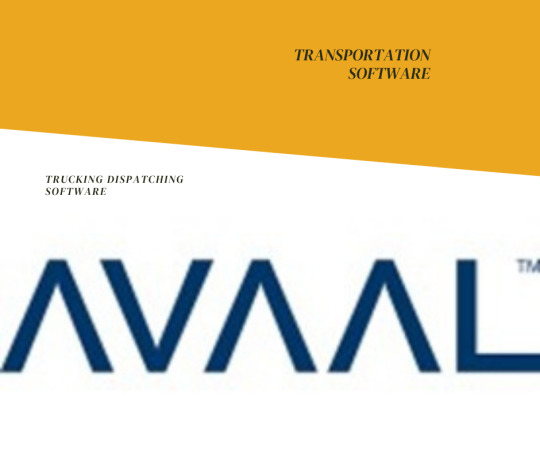
Better Decision-Making:
The data and insights provided by a TMS enable businesses to make informed decisions. Analyzing transportation performance and cost data helps in identifying areas for improvement, optimizing supply chain strategies, and enhancing overall operational performance.
Scalability and Flexibility:
A TMS is designed to scale with your business. Whether you’re expanding operations, adding new transportation modes, or entering new markets, a TMS can adapt to changing needs and support growth.
Choose Right TMS of Your Business
When selecting a TMS, it’s important to consider your specific needs and objectives. Look for a system that aligns with your business size, industry requirements, and budget. Key factors to evaluate include ease of integration with existing systems, user-friendliness, customer support, and the scalability of the solution.
The Future of TMS
As technology continues to evolve, the future of TMS is bright. Innovations such as artificial intelligence, machine learning, and blockchain are set to further enhance the capabilities of TMS. These advancements promise to offer even greater efficiency, accuracy, and security in transportation management.
Conclusion
A Transport Management System (TMS) is a powerful tool that can transform transportation logistics, delivering substantial benefits in terms of cost savings, efficiency, and customer satisfaction. By leveraging the advanced features and capabilities of a TMS, businesses can navigate the complexities of modern supply chains with greater ease and confidence. Investing in a TMS is not just about keeping up with industry trends it's about staying ahead and achieving operational excellence in a competitive market.
2 notes
·
View notes